How Samantha McMillen Went From Magazines and PR to Styling Elle Fanning and Johnny Depp
Her clients also include Brie Larson, Daisy Ridley, Chris Hemsworth, Charlie Heaton and more.
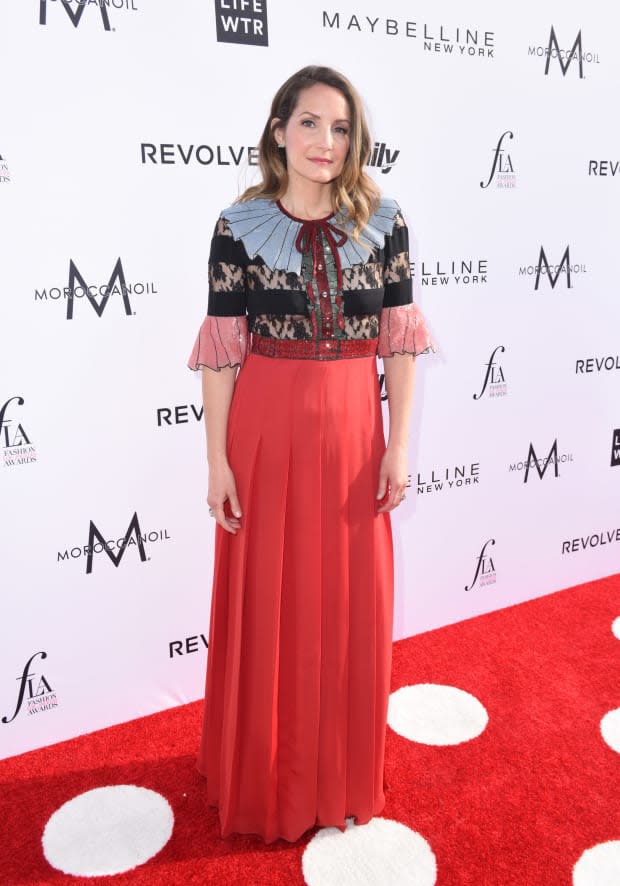
In our long-running series, "How I'm Making It," we talk to people making a living in the fashion and beauty industries about how they broke in and found success.
In the era of social media, a stylist's career can skyrocket overnight, thanks to a memorable red carpet look or notable paparazzi shot going viral online. But Samantha McMillen's styling career has followed a somewhat traditional route. Having started out interning at magazines and doing PR for a major fashion brand in 2001, McMillen made the switch to styling, garnering gigs and clientele through her solid network of contacts and steadily gaining experience by taking on (and working hard at) any styling job she could get.
"That's my lesson for anybody who's coming up: Don't ever think you're too good for any particular job or that no job is important enough because you never know where it's going to lead to, especially when you're young and you're trying to meet people," says McMillen. "All roads can lead to something even better."
Today, she works with some of the most exciting names when it comes to red carpet fashion. Elle Fanning, who she's been styling for nearly a decade, was one of the most talked-about celebrities during the most recent Cannes Film Festival, while Brie Larson's press tour for superhero films "Captain Marvel" and "Avengers: Endgame" kept fans swooning over the subtle nods to her historic leading role and the films' story lines. McMillen's growing roster of male clientele is impressive, too, including Charlie Heaton of "Stranger Things," Chris Hemsworth, John David Washington and Johnny Depp, who happens to be her first-ever and longest-standing client.
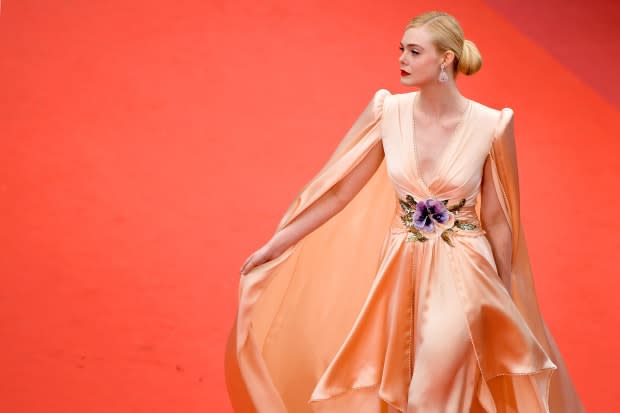
We spoke with McMillen about how she first got interested in fashion, how the styling industry has evolved over the years, her greatest achievement so far and more. Read on for highlights from our conversation.
What are your earliest memories of being interested in fashion?
My grandfather was a Presbyterian minister and he was very popular in Northern California for weddings. I spent a lot of weekends with my grandparents, so they would put me in a little dress and I would go to weddings and sit in the back while my grandfather performed them. I had this appreciation of the grandeur and importance of a wedding and seeing brides get ready. Some of that stuff took hold pretty early and I think that had an impact.
When did you want to pursue fashion as a career?
That was always the plan. It was the direction I went directly out of school. I didn't know that styling existed because it wasn't on your standard list of fashion careers. I really wanted to work in fashion and the closest thing was working for a magazine, so I went in that direction.
What was your first fashion job?
I did an internship at Mirabella magazine in the early '90s and as I graduated and was looking for a job, it was quite difficult to get one for a magazine unless you are related to someone, you socialize, are somebody's daughter, that kind of thing. One of the editors at Mirabella suggested that I try Los Angeles because I was from California and suggested [fashion designer] Richard Tyler. So I went in and I had a meeting and I got the job right away. We kind of invented my job because at that time it was such a small house, and we all did everything. It was such an incredible learning experience for me because I had worked at a magazine but I never saw how a designer worked.
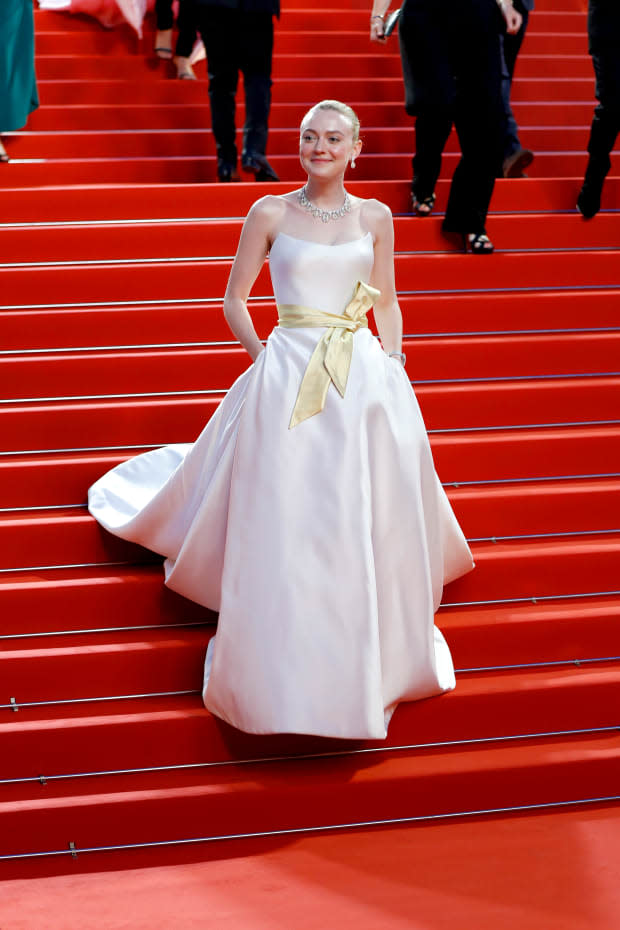
How did you get into styling?
I got headhunted by Armani within a year and a half of being with Richard Tyler and that was kind of hard to say no to. When I left Armani, I thought I'd probably end up styling because that seemed to be what I was interested in — because I was kind of the in-house stylist, I worked with all the VIPs and I did the local fashion shows. I went to Milan and ordered the sample collection and learned all that.
Related Articles
How Karla Welch Went From Being a Sommelier to Hollywood's Top Celebrity Stylist
How Celebrity Stylist Ilaria Urbinati Found Her Niche with Menswear
How Jeanne Yang Went From Styling Blink-182 Videos to Working With Keanu Reeves for 20 Years
As I left, I just let managers and publishers know that I was thinking of styling and there are people who really gave me my first chances. I would do any job; I was so happy to have work. I was doing AARP The Magazine with Billy Crystal and his publicist at the time was also Johnny Depp's publicist. I had worked with Johnny a couple of times at Armani and I just said, 'Oh, how's he doing? I haven't seen him in a while.' He'd been filming and was so busy. She said, 'So funny you asked because he has a shoot coming up in a couple of days. He always liked you and I'm so glad you asked me.' So she put me on that shoot and then I worked with him ever since. As we got to know each other better, I helped him more and more. I felt like I had shown that I was a hard worker and that I was willing to do anything that people needed me to do.
How did you build your clientele and styling skills over time?
There are people that I've known for ages at Armani and dressed for lots of events and they kind of watched my career from afar and then finally came around like, 'Let's work together.' I think there were some people who just needed to know that I could do something other than one specific designer because I think you can get pigeon-holed sometimes about what your taste is.
One of the things I try to do and that I'm known for is not overhauling somebody's style and making it one specific thing that only I can do. It's more about finding who they are and what they love and helping them become the best version of what that is. Not trying to make them become a product or something else. I collaborate rather than bring a bunch of stuff that I think would look good on them.
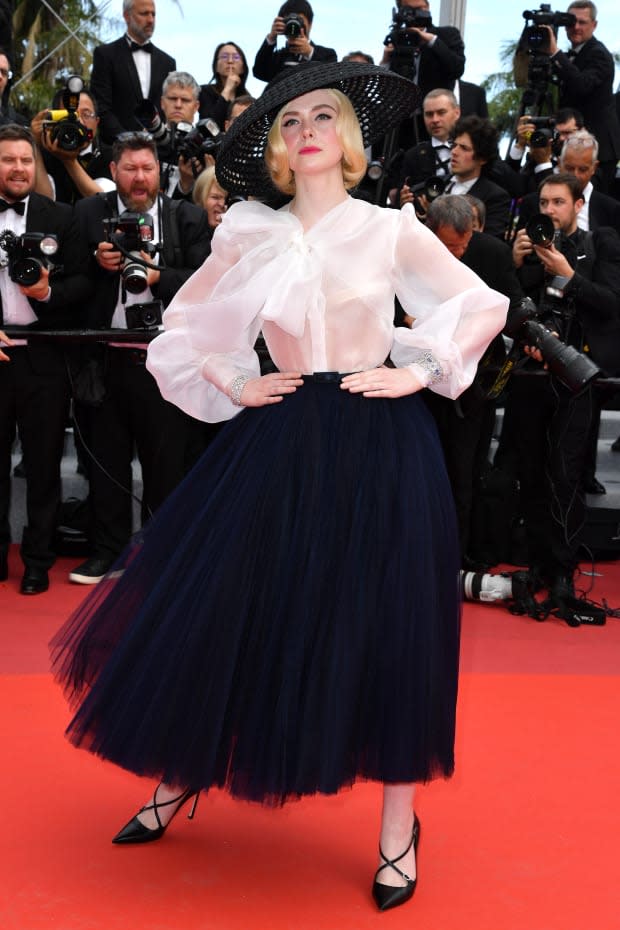
What do you think is your greatest achievement so far?
Oh my goodness. I don't really look at it that way. When my clients are happy and feel good, then I feel that's a great achievement. But it's hard to ignore the impact that something like the Cannes Film Festival has or that the Oscars can have. Or a good run for a campaign can really feel good if somebody's taking notice of the looks and people felt great about it.
My work with Elle Fanning for Cannes has taken a lot of notice and that feels good. Once it goes on the carpet and you start seeing the pictures and you feel like, 'Wow, people are maybe going to remember this, or maybe in 20 years, people will reference this.' I don't necessarily do it for that reason at the time, but I think it feels good to know that somebody may reference something in the future.
Speaking of Elle Fanning, when did you start working with her?
She might have been 12, about to turn 13. Now, she's 21.
How has that creative process evolved over the years?
Her personality hasn't changed as far as her interest and focus on fashion and her knowledge of it. Even as a 13 year old, she was very aware of designers and she was very specific about liking things. She knew which models went down the runway in specific looks and she knew that she didn't want to look like everybody else. She wanted to be unique and different. She was OK with people not liking things sometimes. I loved that she was a risk taker and that she was an original.
That was really fun for me and it's challenging also. It's one of those things where there's a lot of stuff out there, but there's a lot of things that have, I don't want to say cookie-cutter, but there's a safe way to do the red carpet and she didn't ever want to really do safe. Some of the things she wears are classic and Old Hollywood, but not necessarily. Her spin on it and her timing of it is sometimes different than what is the norm at the time.
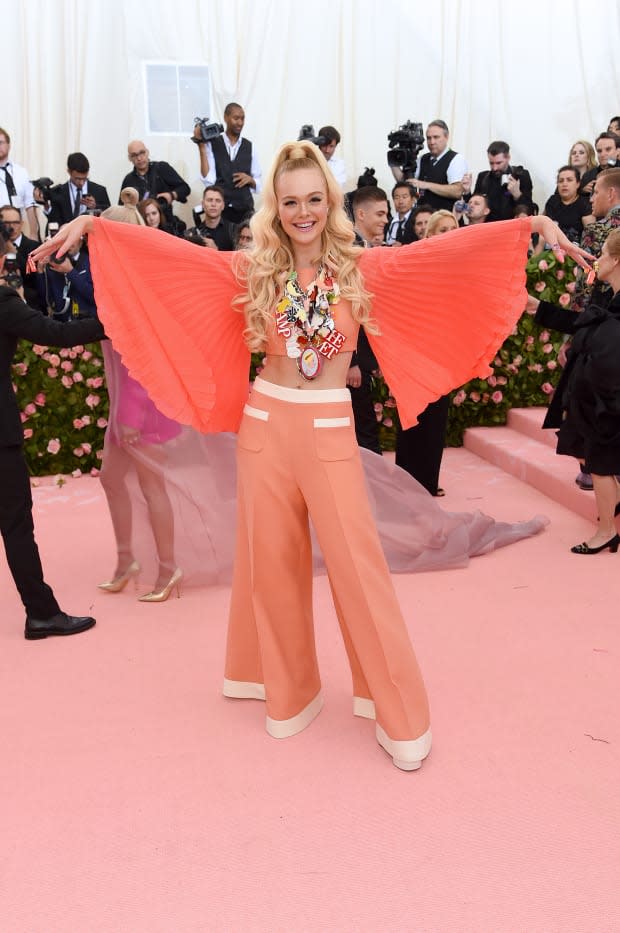
She also likes to be in things that are new. New collections, fresh things off the runway. So that's always been fun. Working with her hasn't changed, but when you're dressing a 12 or 13 year old, wearing stiletto heels, low backs and deep necklines aren't necessarily appropriate. My theory is always: When you can wear certain things, you should, because as you get older, it looks ridiculous if you wear things that are too young for you. I was always OK with things that maybe looked like a doll or had a high neckline with a ruffle while she could do that. It was fun to do that, knowing that she would become a proper teenager and an adult. As she's gotten older, things can get slightly more mature but you also don't want to look too old, so it's finding that balance between what is appropriate, what is fashion, what just looks matronly. It's different for everybody.
Brie Larson is another one of your clients. Her press tour looks for "Captain Marvel" and "Avengers" really tied in with the films. Can you talk a little bit about that process?
You want to have fun with it. She was the first female to get her own franchise with 'Captain Marvel.' There's something empowering and important about that. She's a really great role model for young girls and I felt that that was very important to Brie. Most of the reason that she took the role is to have an impact on young girls and we didn't really publicize it too much, but we tried to dress her in as many female designers as we could. Also representing the underrepresented, so we tried to find designers that you don't see all the time, even if it's in jewelry or accessories.
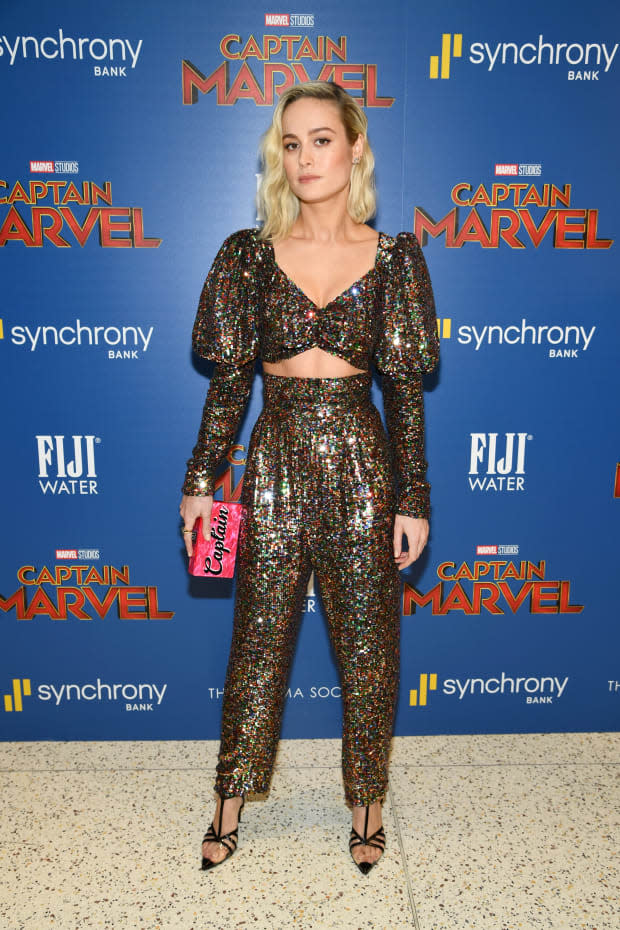
Edie Parker made a special bag that said 'Captain' and she also wore a 'Captain Marvel' tracksuit. We went to a few people who could come up with things like that. There's travel days and that was when we can have a nod to the movie. As you're doing press, people don't necessarily know why you're walking around, but every once in a while, you can remind them subtly.
What do you think is one of the biggest changes within the styling industry since you started?
With the age of social media, there's not as much mystery [around the actors] as there used to be and I miss that. Everybody goes to so much and there's so much clothing that's needed to be used and there's just so much information and so much of everything. Everybody has to dress for every time they step out the door with street style. It's just so much consumption and for me, I feel like that's the biggest difference. It's constant; it's just constant.
In the old days, you used to call up Berliner Studios and ask, 'Hey did you get any pictures of so and so last night?' And they would say, 'Yeah, we got three good ones, we'll print them out and send over.' Now, you scroll past everything on Instagram. Sometimes we have this incredible red carpet moment and somebody's just scrolled right past it. If it has an impact, they stop and look at it for a second. It's a different thing. It's not like you wait a month and it's in a magazine. Everything's instant. Moving at that pace is a lot to keep up with.
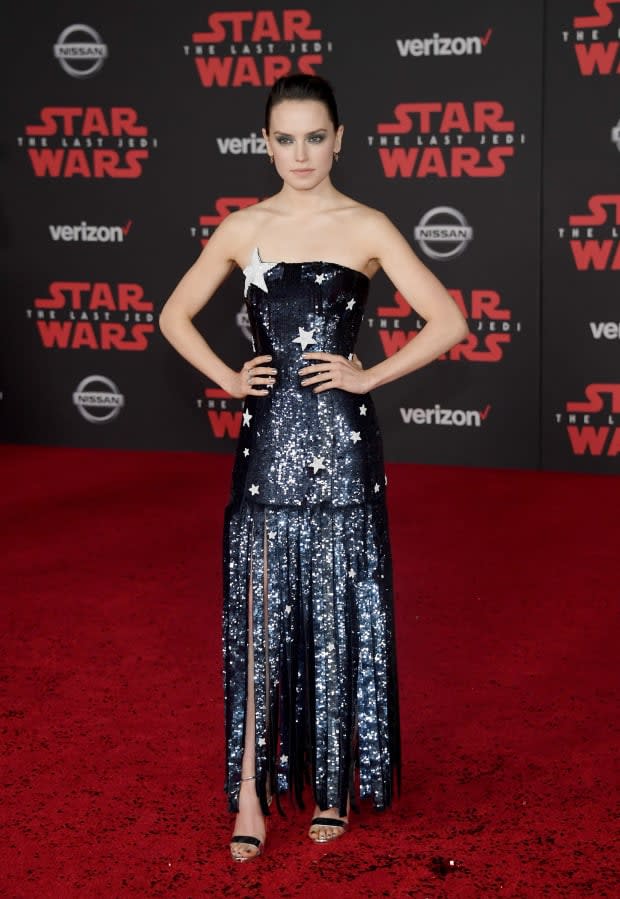
What career advice would you give to someone just starting out in the industry?
You can see certain assistants on set and tell that they're working the room and that's okay, but as long as it's not being obvious. Rise to the occasion when you need to but remain appropriately quiet when you don't need to. If somebody asks you directly a question, answer it, but don't try to overtake every conversation.
We all worked up to where we are and there's something to be admired when somebody works hard to get to a place. Some people want to skip steps and jump into being in a certain place and it doesn't always happen that way. You have to be grateful for everything that you learn. Do the best job of whatever your job is. I still pick up people's dry cleaning, it's part of my job. I'm happy to go get somebody a coffee, it's part of my job. I'm happy to be given a coffee also. And pay attention to what people need. Some people have that and some people don't.
Be kind and be respectful to the other people that you're in business with, not just someone you think is important because they're all important. The intern that's writing up your order needs to be treated with the same kindness and respect as the person who owns the company.
This interview has been edited and condensed for clarity.
Sign up for our daily newsletter and get the latest industry news in your inbox every day.